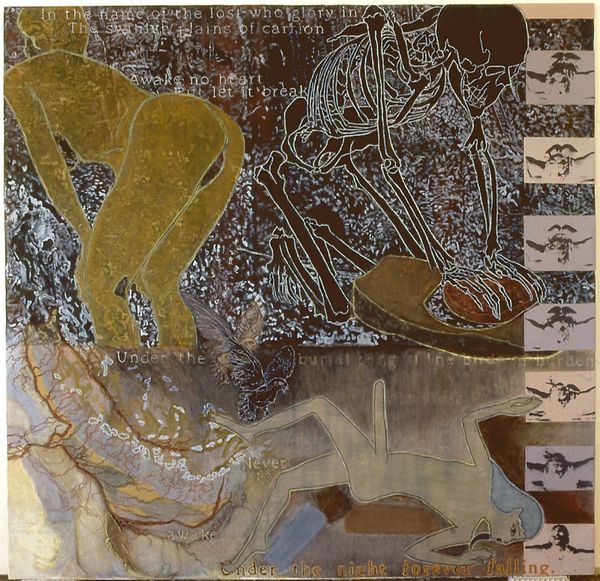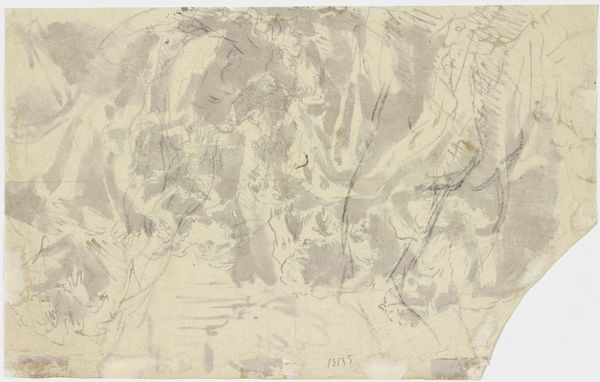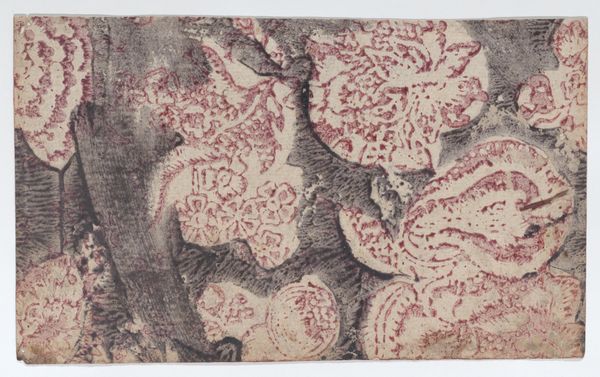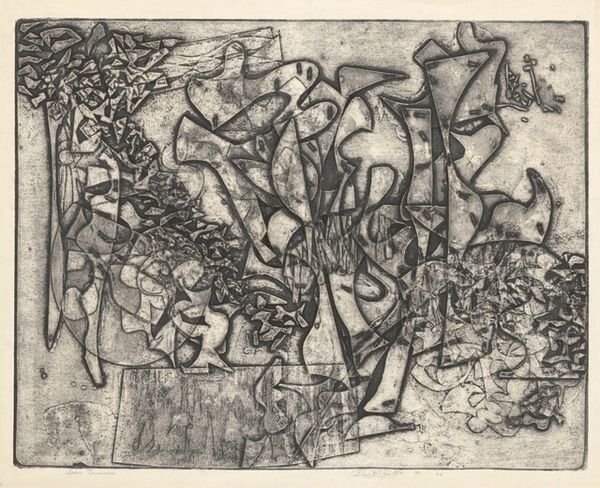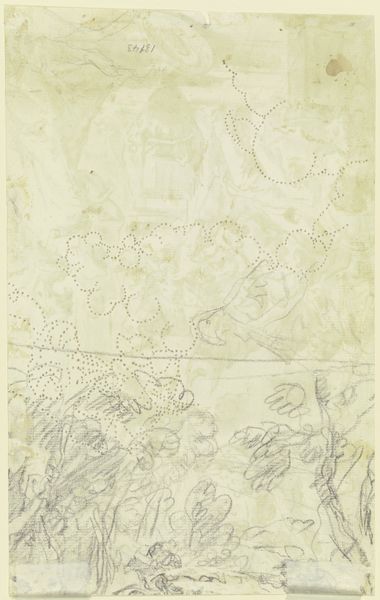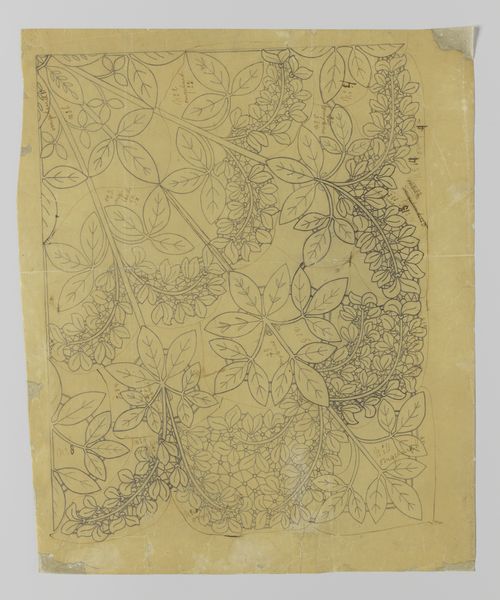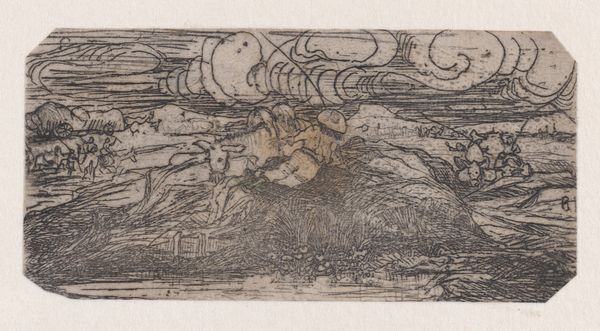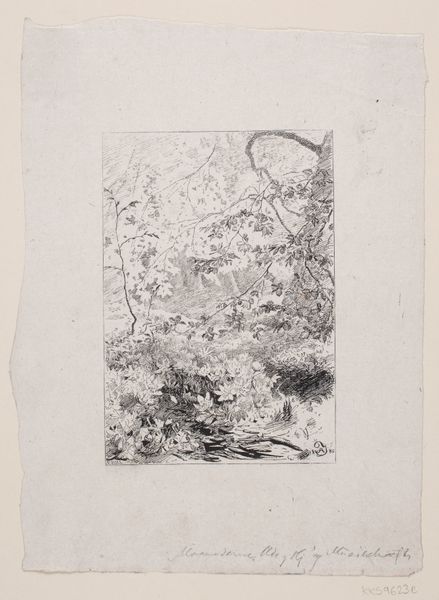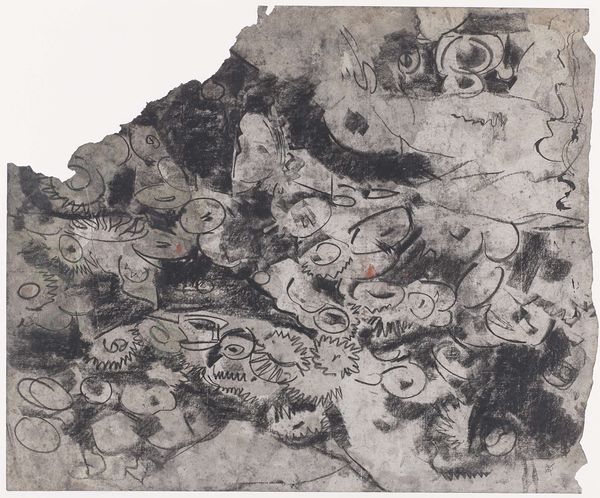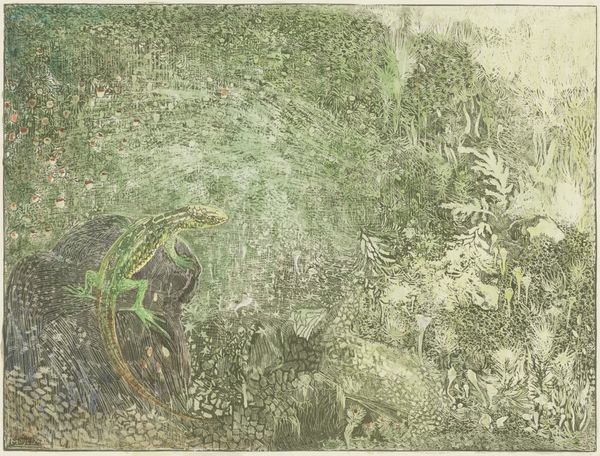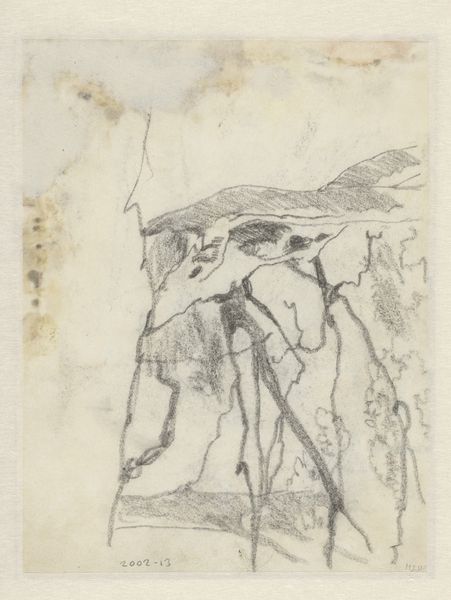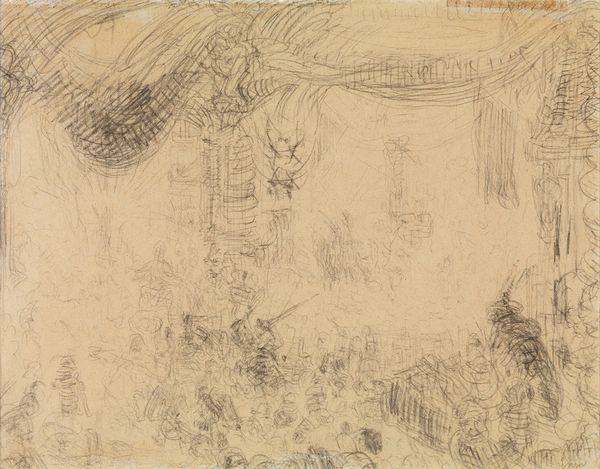
Allegorische voorstelling met figuren en een pauw in een tuin 1890s - 1900s
0:00
0:00
#
garden
#
toned paper
#
light pencil work
#
pencil sketch
#
personal sketchbook
#
ink drawing experimentation
#
pen-ink sketch
#
sketchbook drawing
#
watercolour illustration
#
sketchbook art
#
watercolor
Dimensions: height 495 mm, width 738 mm
Copyright: Rijks Museum: Open Domain
Curator: We’re standing before a work entitled “Allegorische voorstelling met figuren en een pauw in een tuin,” or “Allegorical Scene with Figures and a Peacock in a Garden,” attributed to Karel de Nerée tot Babberich, dating from around the 1890s to the 1900s. Editor: What immediately strikes me is its almost dreamlike quality. The soft pencil and watercolor create a hazy, ethereal atmosphere. The use of toned paper provides a muted background, lending an aged, antique feeling. Curator: Indeed. Observe how the artist employs a very delicate pen-and-ink technique. The composition features a rather surreal garden setting filled with figures, with a central, almost iconic, figure at the forefront. A peacock graces the midground. There's a curious ambiguity in the relationship between the elements within this pictorial space. Editor: I’m fascinated by the use of materials here. The sketchbook quality speaks to process, of artistic experimentation and the blending of watercolor and pen. It is as though we’re privy to the artist’s own evolving understanding of the subject. One can consider how easily these lighter materials lent themselves to plein air drawing sessions. Curator: A crucial point! The sketch-like quality perhaps encourages us to view the work less as a finished statement, but rather an investigation into allegorical form and content. The garden as a space of allegorical meaning. The interplay of human form and natural elements… these relationships certainly warrant deeper examination. The peacock itself, traditionally symbolic of pride, renewal, and even immortality, adds a layer of potential readings. Editor: Exactly, considering how accessible and affordable paper and pencils were in the late 19th century allows more room for artistic production outside of the formal art world, lending to more exploration, personal meaning-making, and maybe challenging what we consider a valuable artwork. Curator: So, on the whole, through the delicate lines and layering, one gets a sense of an unfolding narrative, one that welcomes scrutiny and interpretation. Editor: It’s this glimpse into the artist’s process through the careful use of accessible material that gives it an undeniable intimacy. It is this raw feeling which speaks most to me.
Comments
No comments
Be the first to comment and join the conversation on the ultimate creative platform.
